The Ten Most Important Early Computer and Video Games
These devices, inventions and innovations gave birth to an entire industry.
This article first appeared on USgamer, a partner publication of VG247. Some content, such as this article, has been migrated to VG247 for posterity after USgamer's closure - but it has not been edited or further vetted by the VG247 team.
Today's gaming industry is a massive, multibillion dollar entertainment juggernaut. But what are its roots? I thought I'd take a trip back to the very dawn of gaming history and take a look at the devices, inventions, and innovations that gave rise to our favorite pastime.
If you're interested in this piece, for further reading I recommend checking out They Create Worlds, The Genesis of the Video Game, and Wikipedia's Early Video Game History entry, which were all sources of key info for this article.
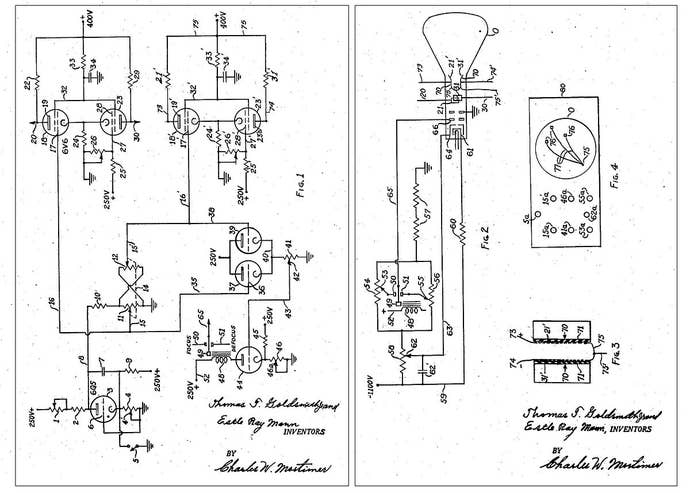
Cathode Ray Tube Amusement Device
- Developers: Thomas Goldsmith Jr. and Estle Ray Mann
- Release: 1947
- System: Cathode ray tube and oscilloscope
- Importance: The first interactive electronic game
Inspired by World War II radar display technology, Thomas Goldsmith Jr. and Estle Ray Mann created the earliest known interactive electronic game while working at the DuMont Laboratories in New Jersey. The bespoke analog machine was basically a cathode ray tube wired to an oscilloscope, and used a set of integrated knobs and switches to simulate the trajectory of missiles, which the user fired at a transparent plastic target overlaid on the screen.
Although a patent for the device was filed on January 25, 1947 and issued on December 14, 1948, the machine was never put into production, or shown to the public. Because it doesn't run on a computer, and consists of purely analog hardware, it's argued that the Cathode Ray Tube Amusement Device doesn't really fit the true definition of a video game. However, I've included it on this list because despite its rudimentary technology, it's nevertheless an objective-oriented interactive experience played on a screen, and I believe it should be considered a progenitor video game.
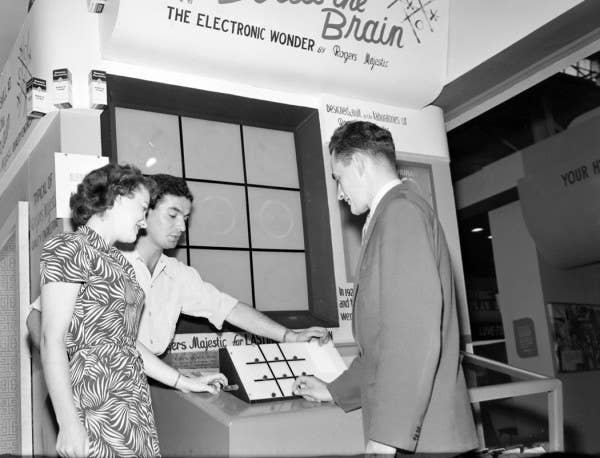
Bertie the Brain
- Developer: Josef Kates
- Release: 1950
- System: Additron computer
- Importance: The first computer game with an AI opponent
Financed by Rogers Majestic, and created by Josef Kates in Toronto for the 1950 Canadian National Exhibition, Bertie the Brain was a very early computer that was specifically designed to play Tic-Tac-Toe against human opponents – as well as showcase Kates' patented miniature vacuum tube technology called the Additron.
The 12-foot-high machine featured a large overhead display lit by light bulbs to represent a Tic-Tac-Toe board, and players used an illuminated control pad mounted on its front to input moves, which the computer then responded to. The game had several difficulty levels, and was apparently very hard to beat on its most challenging setting.
Like the Cathode Ray Tube Amusement Device, Bertie the Brain doesn't quite match the Oxford English definition of a video game because it doesn't have a screen or produce images that the player interacts with. But despite that, I think it fully deserves to be included on this list since it's a computer game that features an AI opponent.
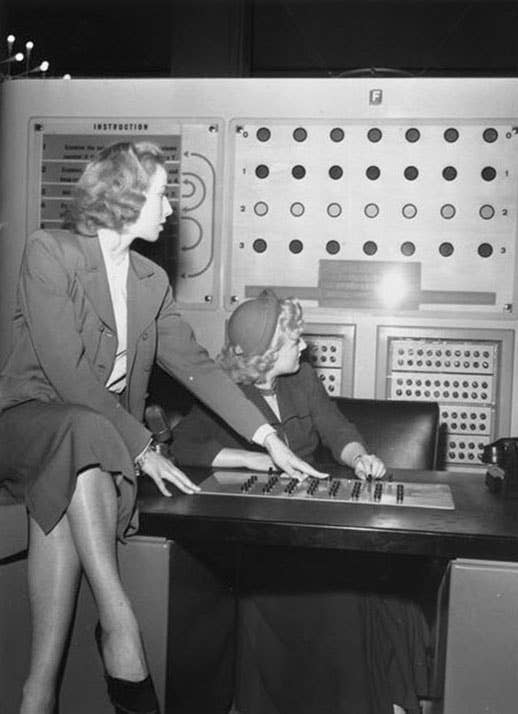
NIM
- Developers: John Bennett and Raymond Stuart-Williams
- Release: 1951
- System: Ferranti NIMROD
- Importance: Early computer game
Designed at Ferranti by John Bennett, and created by Raymond Stuart-Williams, NIMROD was a custom-made computer built specifically as an exhibit for the 1951 Festival of Britain. The impressively large twelve-by-nine-by-five-foot machine was able to challenge expo attendees to rounds of the classic mathematical strategy game, Nim.
Like Bertie the Brain, NIMROD used light bulbs to represent the game's action. Moves were entered into the machine using a bespoke control pad, and a bank of flashing lights enabled players to see the computer "think" as it calculated its response. Because of its lack of screen or projected images, NIMROD is the third game on this list that doesn't quite meet the standard dictionary definition of a video game, but it nevertheless represents an important step forward in the evolution of computer gaming.

Draughts
- Developer: Christopher Strachey
- Release: 1952
- System: Ferranti Mark 1
- Importance: One of the first computer game programs
In early 1951, British computer scientist Christopher Strachey developed a Draughts (aka Checkers) program for the Pilot Automatic Computing Engine at the National Physical Laboratory in the United Kingdom. However, his initial efforts were stymied because the program completely filled the computer's memory, and as a result wouldn't run properly.
Fortuitously, Strachey visited the University of Manchester in May 1951 and talked to Alan Turing, who'd just finished producing a programmer's handbook for the school's Ferranti Mark 1 computer. The machine had a larger memory capacity than the Pilot ACE, and with Turing's help, Strachey set to work transcribing his program to the more powerful computer. Just over a year later in July 1952, his efforts paid off, and the program finally became fully functional, enabling the machine to "play a complete game of Draughts at a reasonable speed."
Strachey's Draughts program was displayed via a simple CRT screen, making it one of the first ever fully encapsulated video gaming experiences.
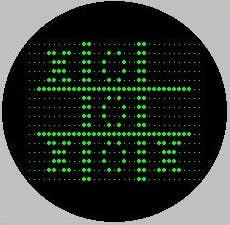
OXO
- Developer: Alexander Douglas
- Release: 1952
- System: EDSAC
- Importance: One of the first computer game programs
Written in 1952 by Alexander Douglas for the University of Cambridge's Electronic Delay Storage Automatic Calculator computer, OXO (a name given to the program by computer historian Martin Campbell-Kelly when he created a Mac OS simulation of it during the 80s) is another Tic-Tac-Toe computer game.
However, there are two major differences between this and Bertie the Brain. Firstly, OXO is a software program that was written for an existing computer, rather than being a custom-made machine, and secondly – and more importantly – the game was displayed on a 35 x 16 dot matrix CRT screen. Players input their moves using a rotary telephone dial, with each number representing a potion on the board, which the computer then responded to with its own move.
Although it doesn't feature moving images that the player interacts with, I still feel that, like Draughts, OXO should be considered one of the earliest video gaming experiences. But the big question is – which came first, OXO or Draughts? Despite spending quite some time researching the subject, I haven't been able to find an accurate date for exactly when in 1952 OXO was created. So for now – and maybe forever – this important detail of which was the first true computer game remains unresolved.
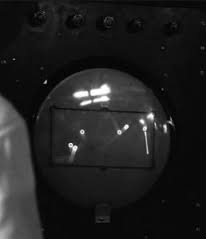
Pool
- Developers: William Brown and Ted Lewis
- Release: 1954
- System: MIDSAC
- Importance: The first true video game
Very little has been written about the games that were created to run on the University of Michigan's Michigan Digital Automatic Computer, but according to this Chicago Sunday Tribune article dating from June 27th 1954, the machine was able to play Tic-Tac-Toe, Checkers, and Craps.
More interestingly, the University's second mainframe, the Michigan Digital Special Automatic Computer, was programmed to simulate a game of Pool, which was displayed on a 13-inch "fluorescent screen". Players used a 2-inch-long on-screen cue to line up their shots, and the MIDSAC computer then made a very impressive 25,000 calculations a second to determine the trajectory of the balls as they ricocheted around the table and collided with one another. The reporter who saw the game being played noted that the balls moved so quickly that they seemed to be in continuous motion – making MIDSAC's Pool the first game to feature graphics that moved and updated in real time.
While the prior games on this list all fall a little short of properly fulfilling the true dictionary definition of "video game", MIDSAC Pool was most certainly, "A game played by electronically manipulating images produced by a computer program on a television screen or other display screen."
In other words, the very first video game was a Pool simulation.

Tennis for Two
- Developer: William Higinbotham
- Release: 1958
- System: Donner Model 30
- Importance: The first two-player video game
While working at the Brookhaven National Laboratory in 1958, American physicist William Higinbotham created Tennis for Two for a public exhibition at the government research institution. Inspired by a Donner Model 30 computer program that simulated ball and missile trajectories with wind resistance, Higinbotham designed the two-player tennis game with help from colleague Dave Potter, and along with technician Robert Dvorak assembled it over a period of three weeks.
The side-viewed game was displayed on an oscilloscope, and featured a long horizontal line that represented the ground, and a short vertical line that represented the net. Players used a pair of bespoke paddles to control the game, pressing a button to launch and hit the ball, while turning the paddle to set its return angle. The game was a big hit at the public event, with hundreds of people lining up to play it. Indeed, Tennis for Two was such a success that Higinbotham upgraded it with a bigger screen and settings for different strengths of gravities for the same event the following year.
Tennis for Two has long been considered the first ever video game, and indeed Higinbotham was called to testify in several court cases during the 70s and 80s in which lawyers unsuccessfully tried to have the game declared as prior art to invalidate Ralph Baer's television video game patents. However, while Tennis for Two is definitely one of the earliest examples of a video game, I feel that MIDSAC Pool ultimately gets the nod as the very first.
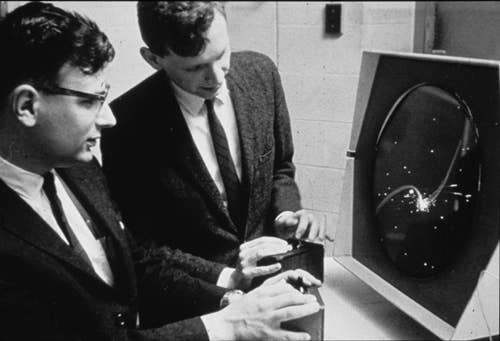
Spacewar!
- Developers: Steve "Slug" Russell, Martin "Shag" Graetz, Wayne Wiitanen, Bob Saunders, and Steve Piner
- Release: 1962
- System: DEC PDP-1
- Importance: The first shoot 'em up
One of the earliest digital computer games, this top-down, vector graphic, one-on-one space shooter was conceived in 1961 by Steve Russell, and programmed on the Massachusetts Institute of Technology's DEC PDP-1 the following year by Russell, with help from Martin Graetz, Wayne Wiitanen, Bob Saunders, and Steve Piner.
Spacewar's gameplay was very simple, but a lot of fun: Each player took control of a spaceship – either "the needle" or "the wedge" – and flew around the single wrap-around screen attempting to eliminate the opposing ship by shooting and destroying it. Later, Martin Graetz and Dan Edwards added a hyperspace feature, as well as a gravity-exuding sun at the center of the screen that affected the trajectory of both the ships and their torpedoes.
Throughout the 60s and 70s, Spacewar was ported to pretty much every contemporary mainframe, minicomputer, and microcomputer available. Even arcade versions of the game were made, the most successful of which was Cinematronics’ 1977 iteration, Space Wars, which went on to sell 30,000 cabinets. Because of its proliferation, Spacewar is one of the most important and influential early video games, inspiring such releases as Galaxy Game, Computer Space, Star Control, and Asteroids.
If you're interested in seeing how Spacewar looked in its early days, here's the original 1962 code running on a Dec PDP-1 emulator in JavaScript.

Chase
- Developer: Ralph Baer
- Release: 1967
- System: Prototype Magnavox Odyssey
- Importance: Gave rise to the video game console
Although Ralph Baer originally conceived the idea of an interactive television device in 1955, it wasn't until he was working at defense contractor Sanders Associates eleven years later that his idea finally came to fruition. Between September 1966 and February 1967, he and associate engineer Bob Tremblay designed and created a working prototype video game system that plugged into a standard TV.
Its one game was hardwired into the system: Two players controlled dots that could chase each other around the screen. Although it was exceptionally simple, this prototype was enough to pique the interest of Sanders Associates' corporate director Herb Chapman, who approved $2500 funding for further research. Baer and Tremblay, along with Bill Harrison and Bob Rusch, continued to work on the device, and by 1968 – after producing seven iterations – finally completed what they called "The Brown Box". This prototype video game system was capable of playing several variants of Chase, Handball, Table Tennis, and Golf, and was also compatible with the light gun that Baer developed for the machine.
The Brown Box was shown to a variety of potential manufacturers, including Motorola and General Electronics, but it was ultimately Magnavox that signed the deal – giving rise to the Odyssey 1TL200, the very first home video game console that was launched in August 1972.
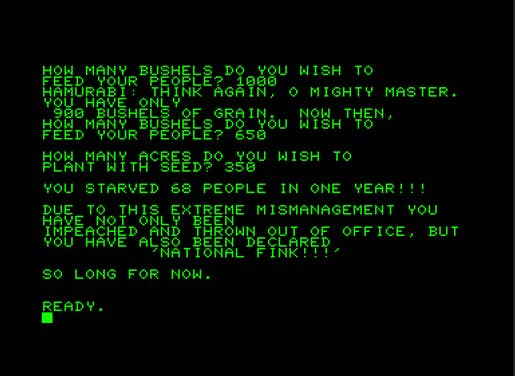
The Sumer Game
- Developer: Doug Dyment
- Release: 1968
- System: DEC PDP-8
- Importance: Antecedent resource management and city-building game
Written in 1968 by Doug Dyment on the DEC PDP-8 minicomputer using the newly created FOCAL programming language, The Sumer Game was an early text-only resource management strategy game. Players took the role of ancient Babylonian king Hammurabi, and went through ten rounds of turn-based decision-making, which involved figuring out how much of their resources to spend on feeding the population, sowing new lands, and dealing with random events such as plagues.
Although The Sumer Game isn't particularly well known, an expanded type-in listing of the game called Hamurabi was included in David Ahl's 1973 book, BASIC Computer Games. Thanks to budding hackers using it to learn how to program, many different variations of the game were created, and Hamurabi ultimately went on to be expanded into several different resource management games, including Kingdom, Dukedom, and Santa Paravia en Fiumaccio.
While it's true that The Sumer Game was predated by other economic and resource management games, most notably the 1966 IBM program, The Sumerian Game, Dyment's creation ultimately had a huge influence on the development of subsequent resource management games, and can be considered an antecedent to such titles as Sim City and Civilization.
